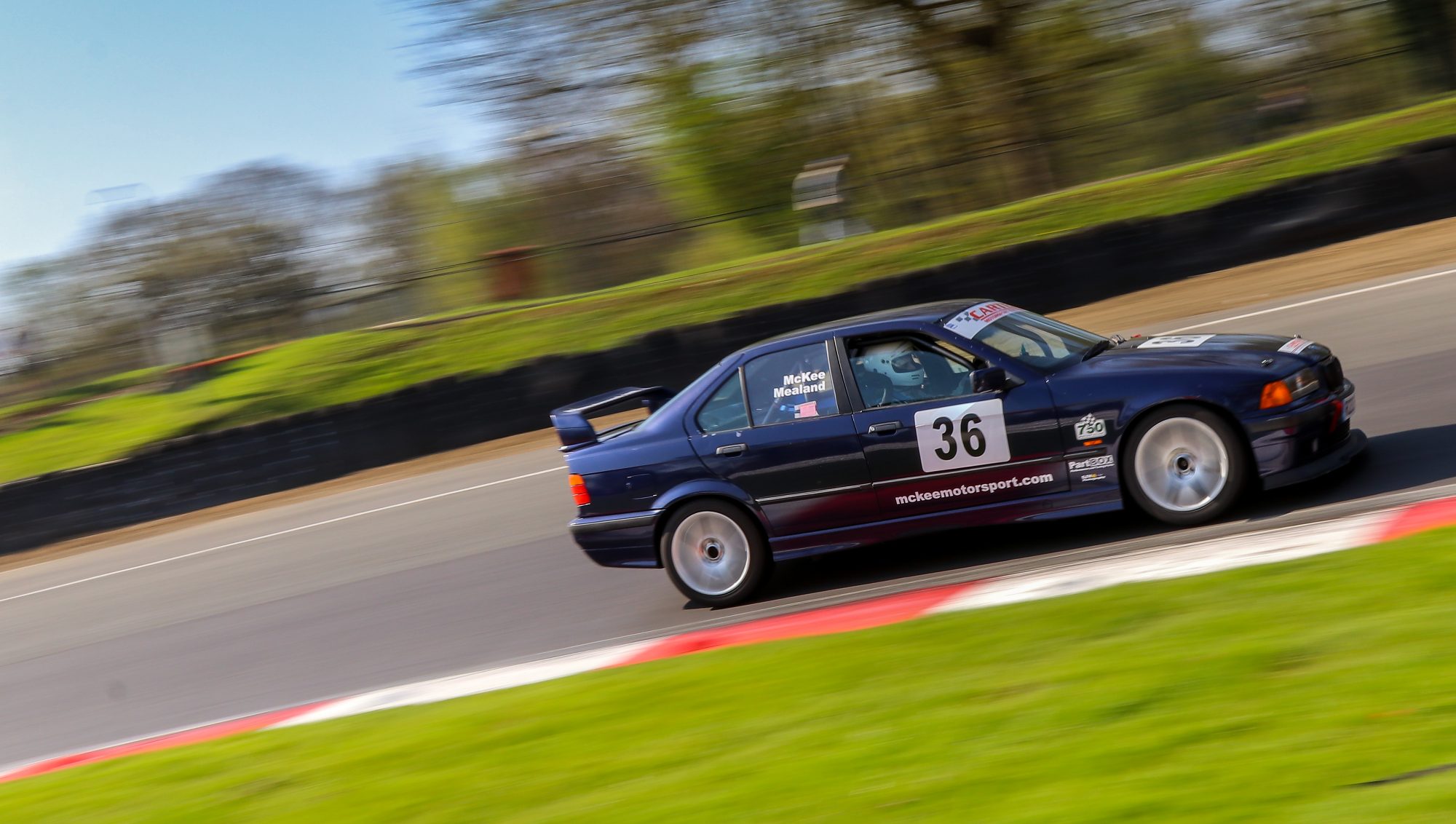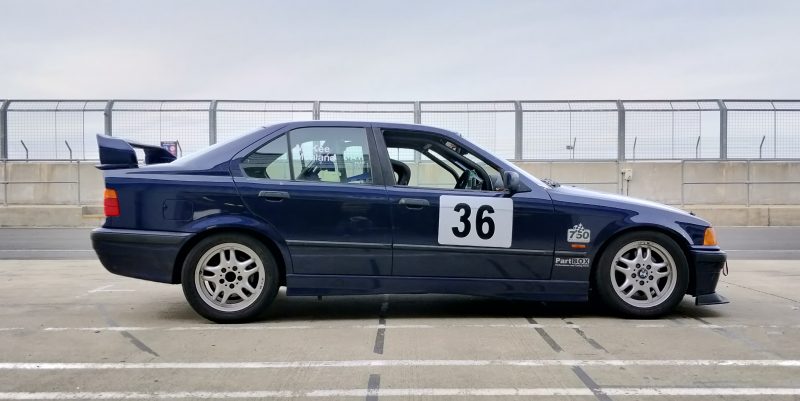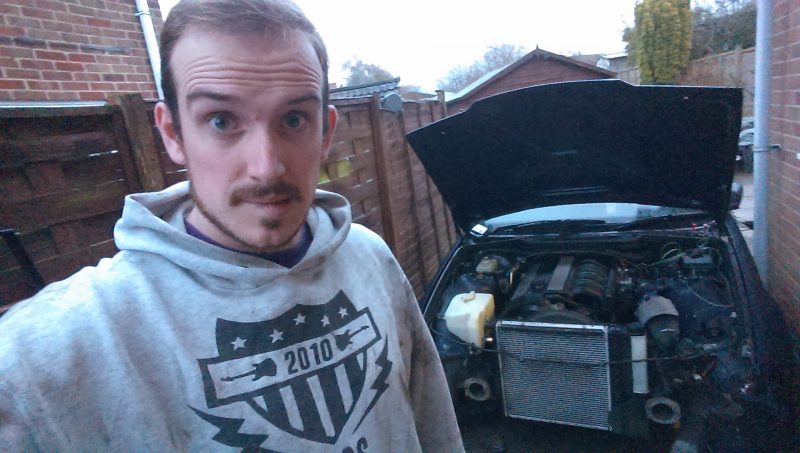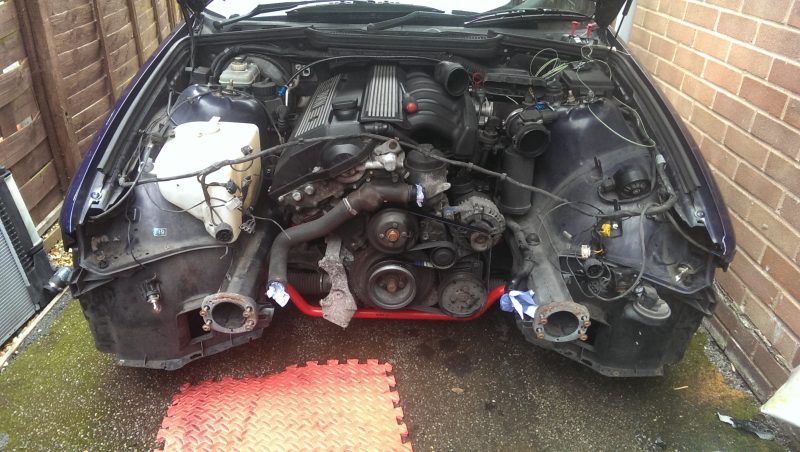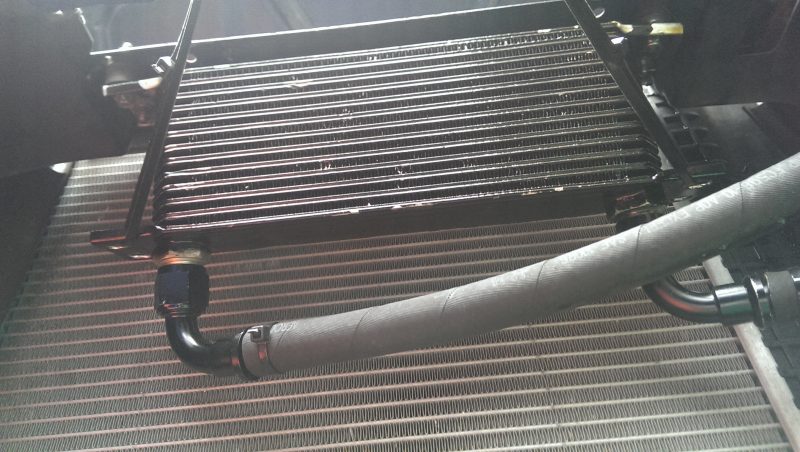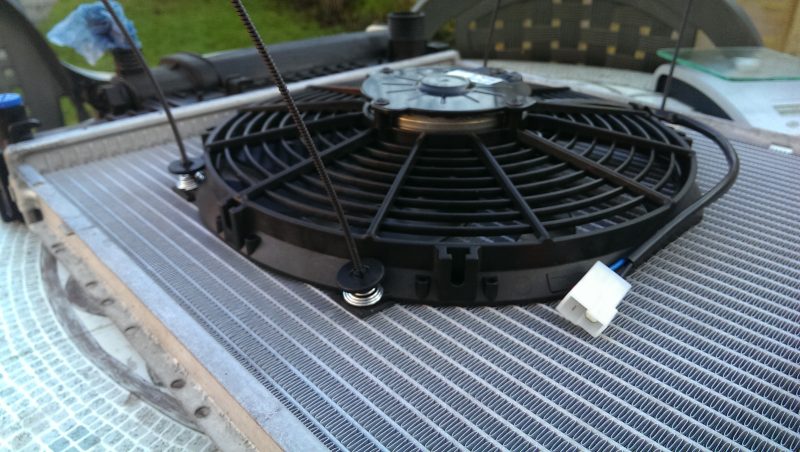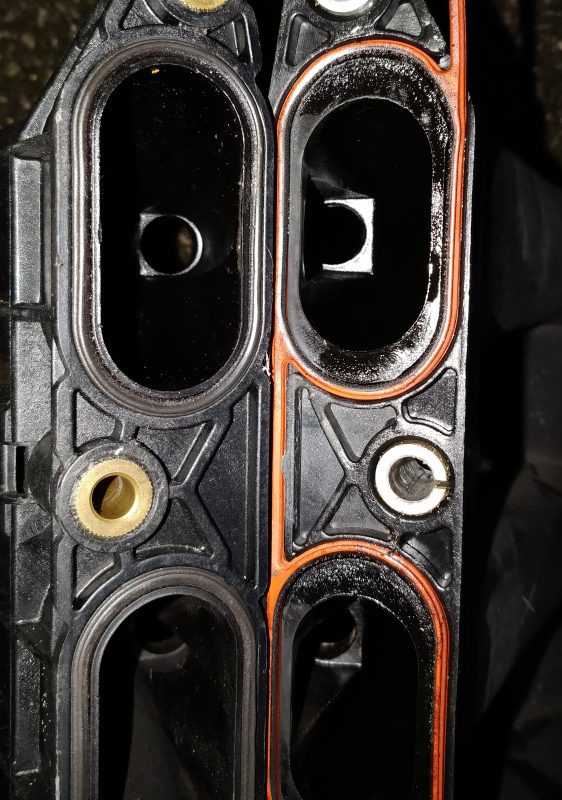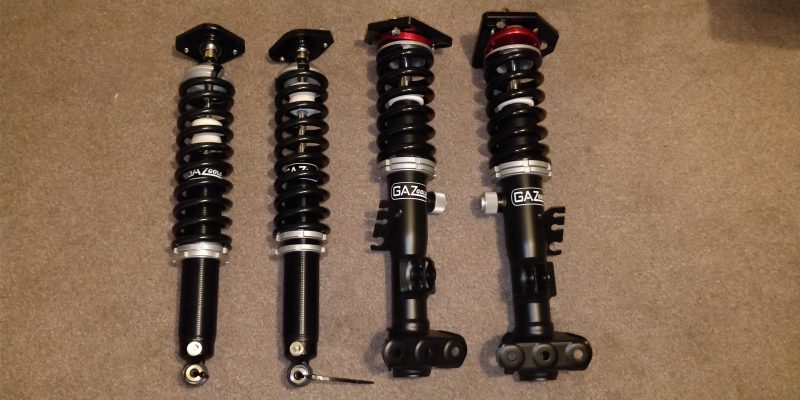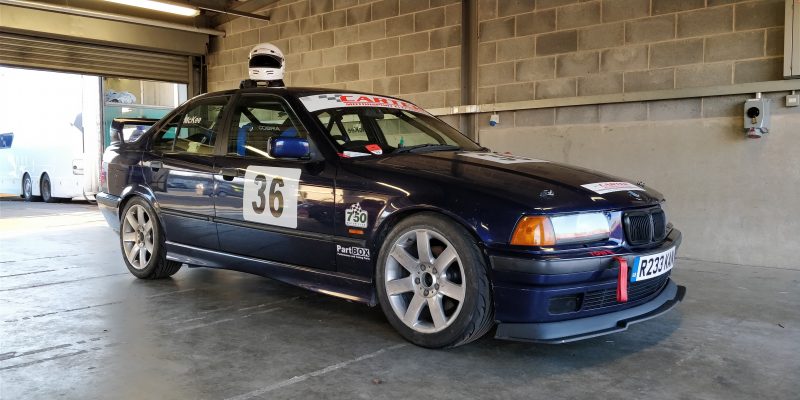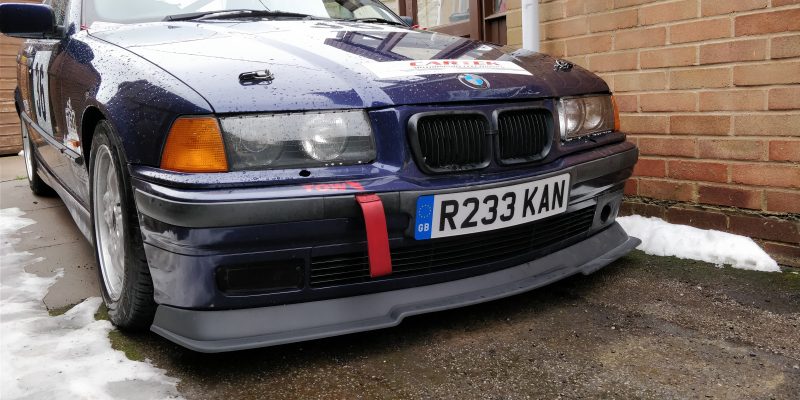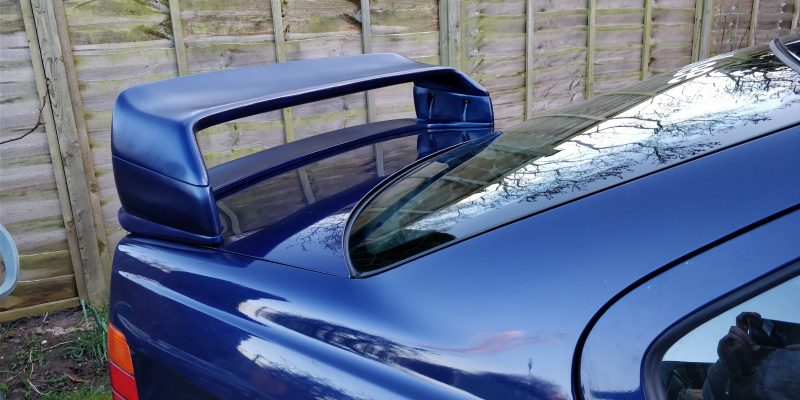Present day: Just in time for the first race of 2018 – tomorrow! – our story comes up to date. This afternoon I’ll be driving over to Donington Park to sign on for tomorrow’s meeting, and try to update live as much as I can. But what happened over the winter?
After a couple of months’ well-earned rest, by Christmas time work had already begun on making the car better to drive, more durable and of course faster. We’d be contesting 750 Motor Club’s Roadsports series once again, with Adam now driving alongside me, but this time in Class C. This meant much more than just going from 160 to 180bhp/ton. The competition is much fiercer in Class C, with a lot of very well-prepared and proven race-winning cars from other championships, and budgets are larger. So every area of the car needed to improve if we were to stand up to the test.
This started with a significant amount of undressing! I had three reasons to remove the whole front end of the car. First, I wanted to replace more of the crash-damaged components. Second, there are parts in there (AC condenser, for one) that we don’t need and are adding needless weight. But third and most important, I wanted to fit an oil cooler and this is the best way to achieve access to do that.
Once we’re in this state of undress, it’s relatively simple to remove the standard M52 engine’s oil filter housing and replace it with the part from an S50, a 3.0 M3 engine. This already has a feed and return to an oil cooler that’s factory fit on M3s, and bolts straight up to my engine block. I could then mount a Mocal 13-row air blast cooler in front of the radiator, hanging from the (new, uncrashed) slam panel on rubber bushes. I used a new slam panel to further straighten things up, and reassembling without the AC condenser, drier, electric fan and the cross-brace to support them all saved me 8.7kg.
Removal of that electric fan that hung on the AC condenser left me with no active cooling at all, since the viscous coupling fan driven by the engine was damaged in the accident and removed. So I added a 12″ SPAL high-power electric fan (1.6kg), mounted directly to the back of the radiator. The car doesn’t need this when out on track, but when in heavy traffic or idling for long periods, it helps manage the temperatures in the rad. I wired it to a simple switch in the cabin so I can turn it on from the driver’s seat when required.
That’s engine cooling taken care of, but what about more power? The 328i is in the fortunate position of having a very simple solution to gain significant power. Due to German tax laws in the 90s, when BMW replaced the 190bhp 2.5-litre 325i with a 2.8-litre 328i, it produced.. 190bhp. Far more mid-range torque, yes, but no more peak power to avoid heavy taxation. This was achieved by restricting the size of the inlet manifold runners. Happily, an unrestricted 325i manifold shares the same bolt pattern to the cylinder head, and requires only some playing about with breather hoses, oil separators and vacuum lines to fit. It helps if you have a James on hand to guide you through the process – thank you once again! The difference is plain when you have the parts side by side:
This lets the engine breathe more freely, unlocking additional power and a much more linear feel as it pulls towards the rev limiter. A typical gain once properly mapped on a rolling road is as much as 25-30bhp. Time didn’t permit getting the car set up ideally for this manifold, but we still pulled a healthy 213bhp on 750MC’s dyno, giving us a target weight of 1183kg to hit the class limit. In the end we got to 1194kg without any fuel, so there’s some work to do over the season to gain some power and/or lose more weight!
Power, as we know, is nothing without control. That’s where these Gaz Gold coilovers come in.
With 750lb/in front springs and 350lb/in rear, they’re not only stiffer than the four-year-old HSD Dualtechs that were fitted until now, but they have vastly superior dampers with a much wider adjustment range. The quality of these parts was impressive, and they felt worth every penny of their £1200 price tag. The reduction in body roll was so stark you could see it from trackside, and after a bit of work getting the car set up right, it felt immeasurably better to drive
Finally, you’ll notice some extra appendages on the car…
As much as it pained me to step away from the “standard road car” aesthetic, performance needs to come first sooner or later, and a race car isn’t complete without some aerodynamic enhancements. Wanting to keep things period and correct, I chose a front splitter and rear wing that are replicas of the parts used on the M3 GT road cars, a “homologation special” for BMW’s touring cars of the time. So not only do they look right on an E36, their function is proven, unlike many aftermarket alternatives.
There’s been a whole host of other little changes and improvements over the winter, culminating in a successful test day at Donington Park last week. We had a little bonus play at Silverstone’s Grand Prix circuit as well, courtesy of RMA Trackdays – here’s how the car looked there.
Now, I’m off to get the car finished and ready for tomorrow’s race! Hope to see you there…
Sam
